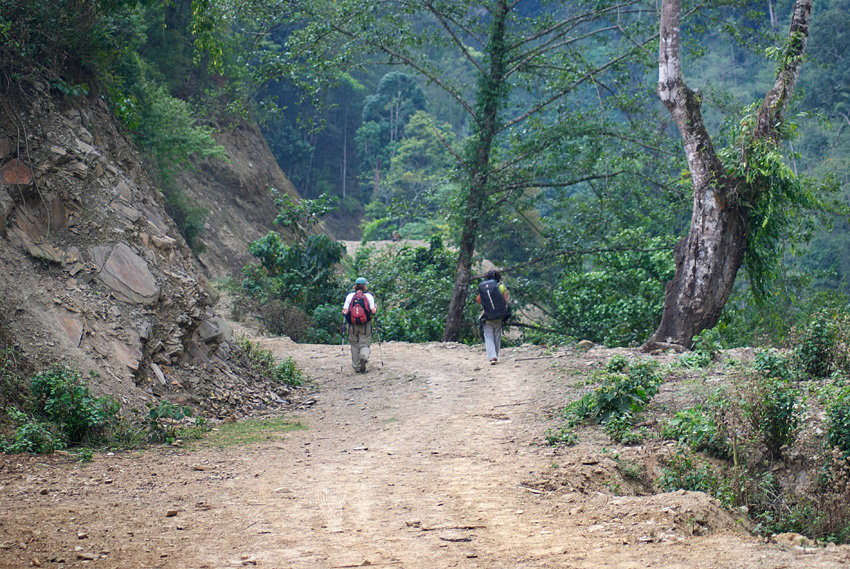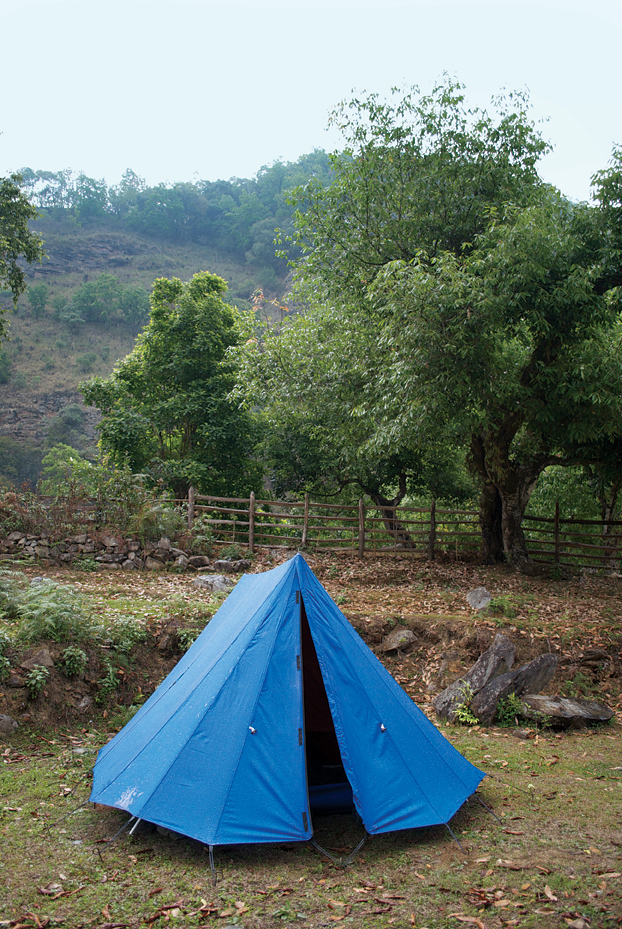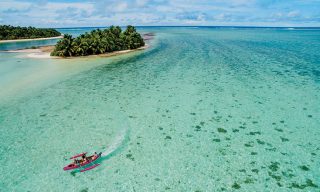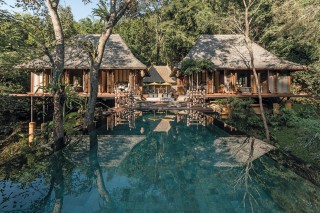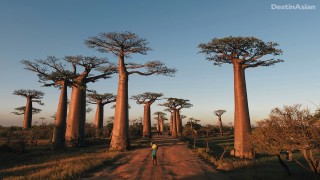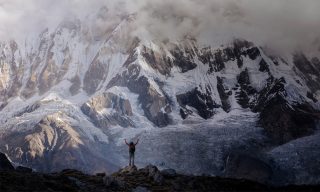Central Bhutan’s Jigme Singye Wangchuck National Park teems with wildlife, yet is also home to remote villages that cling to distinct cultural traditions. For a family with a keen interest in both these elements, a trek through the mountains proves the perfect adventure
Words & photographs by Dan Oko
On a rocky trail dappled by light filtering through a canopy of rhododendron and walnut trees, I stop to catch my breath and wipe the sweat from my eyes. Below me, the mighty Mangde Chhu river plays peekaboo as it cuts a jagged scar through the rolling foothills of the Himalayas. It’s a mesmerizing sight, until a clatter of stones draws my attention uphill to the dark forest. I lift my binoculars and scan the underbrush, eager to catch a glimpse of something wild. Then it dawns on me: despite Bhutan’s reputation as the happiest place on earth, it’s home to some pretty ferocious animals. Along with musk deer and hundreds of bird species, Jigme Singye Wangchuck National Park’s 173,000 thickly forested hectares harbor Himalayan black bears, clouded and common leopards, and the occasional Bengal tiger. My shoulders tense with a mix of exhilaration and terror as I realize that my wife and five-year-old daughter, Ursula, are now out of sight on the trail ahead of me.
Since first opening to tourists in the 1970s, Switzerland-size Bhutan has emerged as a top-tier destination for travelers drawn to the Buddhist kingdom’s Shangri-la image. Many visitors liken it to Nepal as it was 40 years ago, before the hippies took over Kathmandu, and trekkers swarmed the teahouses—to say nothing of Maoist insurgencies. What’s more, along with its high passes and fabled alpine treks, Bhutan boasts some of South Asia’s most diverse wildlife, thanks to a national conservation policy that has preserved about two-thirds of the country’s woodlands.
Hiking the Himalayas may not be every-one’s idea of family fun, but as a mountain-loving dad I was keen to see what level of Bhu-tanese adventure we could approximate with our daughter, and how much backcountry access we might find in such a mystical, mysterious, and animal-friendly place. Which led to me holding my breath, straining my eyes for predators, and wondering what exactly my family had gotten into.
Truth be told, our Bhutan journey was never intended to be all fun and games. We are here not only for the wildlife, but also to explore long-standing communities that predate the relatively recent unification of Bhutan a century ago. This type of anthropological quest is what drives my wife’s life work. By training, Dr. Christina Willis Oko is a professional linguist. Before we became parents, she spent years in northern India studying endangered languages, though lately she had shifted her focus to the Tibeto-Burman dialects spoken in Bhutan. In addition to her field research, Christina works as an assistant professor at Rice University in Houston, Texas.
In short, Christina’s professional program revolves around what she and other linguistic researchers consider to be a pressing need to identify and document the indigenous languages spoken in this remote corner of South Asia. “There are 19 identified languages in Bhutan,” she explained before our trip, “but because the country only opened up to outsiders 40 or so years ago, researchers haven’t had a chance to look deeply at them.”
I may be a fan of colorful birds and ancient Buddhist temples, but Christina is here to record interviews with speakers of a little-known language called Khengkha. Like many tribal languages around the globe, Khengkha faces a profoundly uncertain future; indeed, the United Nations estimates that half the world’s 6,000-plus languages are in danger of disappearing before the end of this century. Linguists, including Christina, argue that in the developing world, rates of language extinction are compounded by the fact that many dialects have never been recorded. Khengkha, as an oral language with no writing system, is highly susceptible to pressures such as globalization, warfare, and compulsory schooling in Bhutan’s national language, Dzongkha. Christina’s recordings will form a first line of defense for Khengkha speakers—of whom there are perhaps 40,000—to maintain their linguistic traditions.
Though we’re traveling with a commercial tour operator called Journey to Bhutan, our guide, Ratu Drukpa, also serves as the in-country project manager for the U.S.-based Bhutan Oral Literature and Documentation Project. A charming, humorous fellow who once led mountaineer Jim Whittaker—the first American to summit Mount Everest—across Bhutan, Drukpa proves invaluable as a fixer and translator, helping Christina communicate with the folks we encounter during our weeklong, community-based trek between Nabji and Korphu, two of several villages in this obscure corner of Jigme Singye Wang-chuck National Park. Along the way, we get to learn about everything from the seasonal crops to animist deities worshipped in the mountains of Bhutan. “Language and culture are intrinsically related,” Christina reminds one night when I ask her if the day has been productive. “You can’t really get at the nuances of a language unless you are familiar with the culture.”



